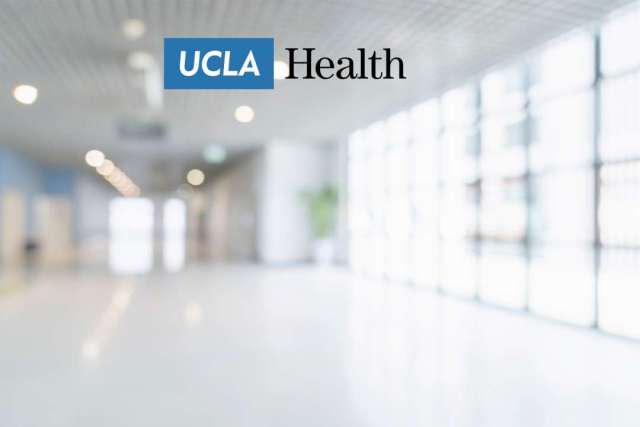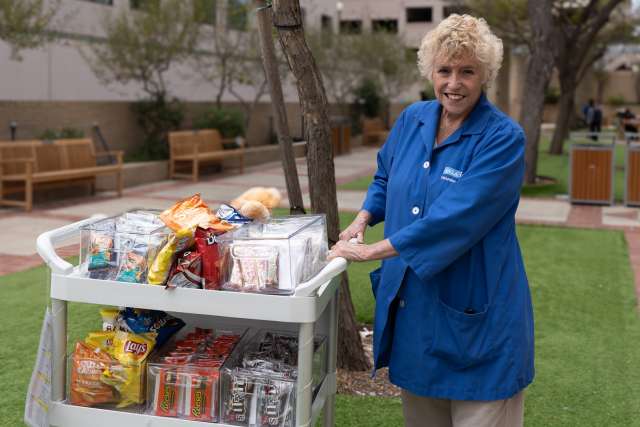Every minute counts after the onset of a stroke. The more time that elapses before a patient receives an intravenous drug to help break up the clot that is blocking a blood vessel in the brain, the slimmer the chances of a good outcome.
Less than one-third of acute stroke patients treated with the clot-busting drug, called intravenous tissue plasminogen activator (tPA), receive it within 60 minutes of their hospital arrival, according to research presented at the American Stroke Association's International Stroke Conference 2011.
The research is published simultaneously in Circulation, a journal of the American Heart Association.
The tPA drug is a proven intervention for acute ischemic stroke patients but can only be given within four-and-a-half hours after the onset of a stroke — it has the greatest benefits when given earlier in that timeframe.
"Despite proven benefits, national guidelines recommendations and explicit goals for administering tPA within 60 minutes of hospital arrival, the vast majority of U.S. hospitals are not meeting this critical goal for timely administration of tPA in stroke patients," said Dr. Gregg C. Fonarow, lead author of the study and Eliot Corday Professor of Cardiovascular Medicine and Sciences at the David Geffen School of Medicine at UCLA.
In the study, researchers reported the frequency, patient and hospital characteristics, trends, and outcomes of ischemic stroke with door-to-needle times of 60 minutes or less.
Researchers analyzed data from 1,082 hospitals participating in the American Heart Association/American Stroke Association's Get With the Guidelines–Stroke quality improvement program between April 2003 and September 2009. Specifically, the researchers looked at 25,504 acute ischemic stroke patients treated with tPA within three hours of symptom onset.
They found that during the entire study period, only 6,790, or 26.6 percent, received tPA in 60 minutes or less. The median time for hospitals was 78 minutes. There was only a modest improvement during the six-and-a-half years, from 19.5 percent in 2003 to 29.1 percent in 2009.
Patients who were younger, male, white and had not had a previous stroke were most likely to receive the therapy within the recommended 60-minute window, Fonarow said.
"It is a great concern that older patients, women and black patients were less likely to receive timely tPA administration," Fonarow said. "It's also notable that the symptom onset–to–arrival times were shorter in patients with door-to-needle times of greater than 60 minutes, suggesting that hospitals were taking a more relaxed approach to the administration of tPA in earlier-arriving patients."
Additional patient characteristics associated with timely tPA administration included greater neurologic deficits upon arrival at the hospital and getting to the hospital during normal business hours, between 7 a.m. and 5 p.m.
Hospitals that had greater annual volumes of tPA-treated stroke patients were more likely to administer the therapy within 60 minutes of hospital arrival.
"This suggests that greater hospital-team experience translates into improved performance," said Fonarow, who also directs the Ahmanson–UCLA Cardiomyopathy Center who and is the immediate past chair of the Get With the Guidelines steering committee for the American Heart Association and American Stroke Association.
The proportion of patients with door-to-needle times of 60 minutes or less varied widely by hospital. Some hospitals did not achieve tPA administration within the ideal time frame for any patient. Other hospitals achieved needle-to-door times of 60 minutes or less in 80 percent or more of patients.
The size of a hospital, its academic or non-academic status, primary stroke center designation and geographic location were not associated with timely tPA administration.
In additional research, the team also demonstrated that in-hospital mortality was significantly lower among patients treated more timely with tPA. The mortality rate was 8.6 percent for patients administered tPA in less than 60 minutes, compared with 10.4 percent for those receiving treatment after 60 minutes. There were also fewer complications with more timely treatment.
Despite similar stroke severity, in-hospital mortality was lower and intracranial hemorrhage was less frequent for patients with door-to-needle times of less than 60 minutes than for those with times greater than 60 minutes.
Researchers' analysis found that every 15-minute reduction in tPA administration time was associated with a 5 percent lower risk of in-hospital mortality, even with extensive risk adjustment for all types of stroke patients.
"Early tPA treatment is key to effectively treating stroke and lowering mortality for the majority of patients," said study author Dr. Jeffrey L. Saver, a professor of neurology at the David Geffen School of Medicine at UCLA and director of the UCLA Stroke Center. "Once the patient arrives at the hospital, it is critical for the facility to perform rapid diagnostic evaluation and imaging, and in eligible patients promptly initiate tPA."
"These findings demonstrate for the first time that shorter door-to-needle times improve the likelihood that acute ischemic stroke patients will survive," Fonarow said.
The study identifies substantial opportunities nationally for improving the speed of tPA therapy initiation in acute ischemic stroke patients, researchers said.
"These findings suggest there is a critical need for a targeted campaign tailored to increase the portion of patients with door-to-needle times of 60 minutes or less, such as the recently launched American Stroke Association's Target: Stroke initiative," Fonarow said. "Nearly 1,000 hospitals across the country are now registered to use Target: Stroke information and tools to improve their door-to-needle time for administering tPA to appropriate stroke patients."
Ronald Reagan UCLA Medical Center is recognized for excellence in emergency stroke care and has just made the honor roll for the Target: Stroke initiative.
The research was funded by Get With The Guidelines–Stroke, which is currently supported by a charitable contribution from Bristol-Myers Squib/Sanofi Pharmaceutical Partnership and the American Heart Association Pharmaceutical Roundtable. The program was previously supported by Boeringher-Ingelheim and Merck.
Additional authors include Eric E. Smith, M.D., M.P.H.; Mathew J. Reeves, Ph.D.; Deepak L. Bhatt, M.D., M.P.H.; Maria V. Grau-Sepulveda, M.D., M.P.H.; DaiWai M. Olson, Ph.D., R.N.; Adrian F. Hernandez, M.D., M.H.S.; Eric D. Peterson, M.D., M.P.H.; and Lee H. Schwamm, M.D.
Author disclosures are included in the manuscript.
For more news, visit the UCLA Newsroom and follow us on Twitter.



